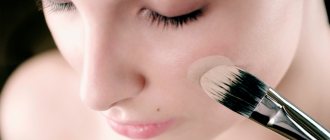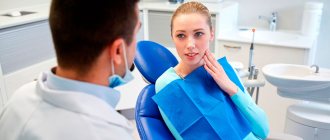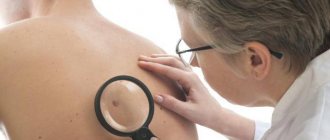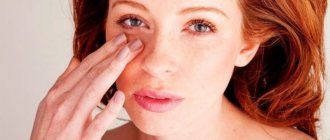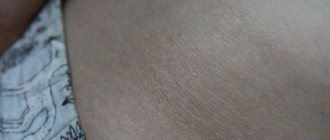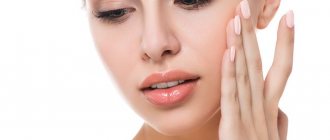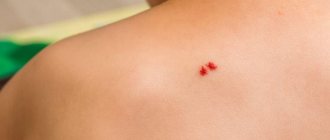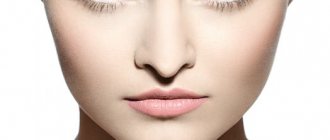Perhaps you have noticed, when looking in the mirror, small bumps on your skin? These are bumps that cannot “pop” like a regular pimple. And for some reason you can never seem to get rid of them... They frustrate you because no matter what you do, you just can't seem to get rid of them.
If you have ever had such problems or are experiencing them now, this means that you have subclinical microcomedones (subclinical acne), which are the precursors of acne. You may have noticed them on your forehead or even your cheeks. The good news is that you can get rid of them.
To get rid of subclinical acne you need to know what it is and why it develops on your skin. Knowing this, you can make changes to your skin care routine to say goodbye to bumpy skin and leave your face feeling smooth and radiant.
So, what is subclinical acne?
Many tubercles become inflamed and filled with pus. These are the inflamed pimples or acne that we are all very familiar with. Subclinical acne (subclinical microcomedones or bumps on the skin) is a little different.
When you have subclinical microcomedones, bumps appear on your face, but they never develop a “head,” like an inflamed pimple that looks like a pustule—the technical name for a pimple. It may be red, but not necessarily irritated or inflamed. Instead, it just makes your skin look uneven. This is caused by clogged pores. Subclinical microcomedones are caused by hormones, genetics and clogged pores, and are the precursors to acne.
You already know that clogged pores are caused by excess sebum (oil) on the skin. Dead skin cells and impurities can also clog your pores, leading to the typical pimple and subclinical blackheads. And if your pores are clogged, you will notice these bumps appearing on your forehead, cheeks, chin and nose.
What could this mean in an adult?
In principle, all types of bumps on the head in adult patients can be divided into:
- Consequences of injuries.
- Bite marks.
- Various neoplasms (tumors).
- Purulent inflammation.
- Enlarged lymph nodes.
Sometimes you cannot determine on your own why a bulge suddenly appears on your head. If such a lump grows and looks quite suspicious, it is better to play it safe and see a specialist.
Compaction after impact
Perhaps hematomas after injuries are the most common causes of the appearance of hard and painful lumps on the forehead or back of the head under the hair. Of course, it is almost impossible not to notice the moment of damage in this case (the exception is perhaps loss of consciousness), so finding out where the lump grew on the head is not at all difficult. A bump from an impact has several specific signs:
- It is growing quite quickly.
- It differs in color from the surrounding skin (at first it looks red, then bluish, and as it heals, yellowish-green).
- It is quite painful. Most often, after an injury, it is not the lump itself that hurts, but the entire area around it.
The main reason for the appearance of a bump on the head after a blow is the accumulation of fluid under the skin, which penetrates there from injured vessels.
Most often, such an injury does not require targeted treatment, but if it is accompanied by a significant disturbance in well-being (loss of consciousness, nausea, vomiting), it is better to consult a doctor as soon as possible.
Red bumps from bites
Sometimes single or multiple red bumps on the head of an adult are nothing more than bite marks. Most often, such a nuisance is explained by a mosquito attack. They can bite the head if access to bare parts of the body was closed (for example, if a person covered himself with a blanket). Another cause of the appearance of small tubercles can be lice. Traces from their bites can most often be found behind the ears and on the back of the head; they itch very much and do not go away quickly (like mosquito bites). When infested with lice, tiny, tightly attached nits—parasite larvae—are also found on the hair.
Neoplasms
Painless bumps on the head that suddenly appear for no apparent reason may represent tumors. In fact, quite a few types of such neoplasms can form on the scalp. If they appear, you should consult a doctor to eliminate the risk of cancer and determine the need for surgical intervention.
Soft tissue tumor
The following tumors may appear on the head:
- Lipoma. This is the most common benign tumor that can be found on the scalp under the hair. Lipoma is also known as “fat”; it is distinguished by its soft consistency, mobility and painlessness.
- Atheroma. This tumor occurs due to blockage of the sebaceous gland duct; it can occur on any part of the body where hair is located. This benign tumor is essentially a cyst; it has the appearance of a superficially located dense elastic formation, has clear contours and is quite mobile. There is a risk of suppuration of such a neoplasm.
- Fibroma. This benign formation is formed from fibrous connective tissue. The tumor has a dense consistency and round shape, is painless and can gradually increase over many years.
If bumps on the head appear and disappear, only a doctor can determine their nature. Sometimes such a symptom can be observed during the development of cancer.
Benign neoplasms on the head are not prone to malignancy. But if the tumor is too large, is constantly injured or is actively growing, doctors insist on removing it.
Bone growths
Sometimes tumors arise not from soft tissue, but from bone. In particular, exostosis may occur on the head - bone or osteochondral overgrowth. This is a rather rare condition, which is often detected in patients completely by accident - during an examination for another reason. But sometimes exostosis increases to such a size that the growth can already be felt with your hands. Bone lumps can appear on the back of the head or on the forehead; they give the patient a rather frightening appearance, but, more often than not, do not pose a serious health hazard.
Bone growths have a slow growth rate and are not prone to malignancy. Treatment of such defects can only be surgical; often doctors prefer only to observe their development.
Vascular
The red lump that appears on the head may well be a hemangioma - a vascular tumor. Most often, such neoplasms occur in infants and are even present on the body from birth. But sometimes they can also appear in adults, for example, due to genetic predisposition or some kind of malfunction in the body. Diagnosing hemangioma is not difficult; you need to consult with a dermatologist, oncologist and surgeon. The tumor may need to be removed.
Purulent inflammation
Sometimes tubercles on the head may appear due to purulent inflammation. Such a skin problem under the hair is not very common, but its development can be facilitated by a decrease in general immunity, injury to the skin, and the presence of quite serious health problems that also undermine the body’s defenses. Several types of purulent inflammations can occur on the head, in particular:
- Folliculitis. Small subcutaneous lumps on the head, the size of which does not exceed a pea, can be subcutaneous abscesses formed in the area of the hair follicles. Ulcers can be quite deep and superficial; they feel like tubercles to the touch. The skin around them may swell and turn red a little. When such skin defects appear, the patient may experience itching in the affected areas and pain, especially when pressed. True, in some situations, ulcers do not hurt at all, which makes their timely diagnosis difficult.
- Furuncle. This is a single abscess that looks like a lump filled with pus. Most often, such a formation does not appear immediately - at first a slightly swollen redness appears on the head, which then turns into a large tubercle. The boil can burst after maturation on its own and heal without complications. But if it grows a lot, does not burst and causes a strong deterioration in your health, it is better to consult a doctor.
- Suppurating atheroma. Small subcutaneous cysts on the head often go unnoticed by the patient, but if bacteria enter their cavity, suppuration can occur. This process is accompanied by a noticeable increase in atheroma, swelling and redness of the skin, as well as intoxication of the body (increased temperature, weakness and lethargy). This condition requires surgical treatment.
If you find strange bumps on your head, in which you can see pus, or which are noticeably painful and become hot to the touch, it is better not to hesitate and visit a dermatologist as soon as possible. The spread of infection is fraught with the development of serious inflammation and even sepsis.
Lymphadenopathy at the back of the head
Lymphadenopathy is a condition in which the size of the lymph nodes increases. Such organs are an important part of our body; they can be compared to filters that prevent the spread of various aggressive microorganisms and other pathogenic substances throughout the body. The lymph nodes on the back of the head are located just above the hair growth zone; when enlarged, they are felt like moving balls under the skin - on one side or both. Such a nuisance can occur due to:
- ARVI, sore throat, conjunctivitis, influenza, otitis media, sinusitis, etc.
- Diseases of the oral cavity and teeth.
- Various childhood infections - measles, rubella, etc.
Sometimes lymph nodes become enlarged when infection enters them from other parts of the body, for example, after injuries (especially if the skin is damaged) and purulent rashes. There is also a connection between the occurrence of such a symptom and the development of cancer.
Separately, it is worth mentioning the enlargement of the lymph nodes, which is complemented by inflammation of such organs. In such a situation, they become painful and hot to the touch, can grow greatly - up to the size of a chestnut, and fester.
These processes are often accompanied by a disturbance in general well-being and require immediate consultation with a doctor.
Incorporate a cleanser into your daily routine
The best way to cleanse your skin and remove bacteria and dead skin is to be smart about the products you use.
Make sure you use a cleanser that removes makeup without leaving your skin dry and irritated. If you already have dry or sensitive skin, try a creamy cleanser that will soothe your skin, like Nettoyant Creme Cleanser . If you have combination or oily skin, you'll be better off using Gel Nettoyant Cleansing Gel . It removes makeup while softening and cleansing the skin.
How to get rid of it and how to treat it?
Of course, if an incomprehensible lump appears on the forehead, on the top or back of the head, it is better not to guess what it is and when it will go away. The most sensible thing to do in this situation would be an unscheduled visit to the doctor - to start with a regular therapist or dermatologist. Afterwards, you may need to consult with other specialists.
Treatment for bumps on the head directly depends on the cause of their appearance:
- If the bulge occurs due to a blow (injury), you should immediately apply cold to the affected area. This will help reduce the lump, or even prevent its formation. The use of heat is strictly prohibited.
- If the lump is a benign tumor, you should definitely discuss the possibility of its removal with your doctor. Perhaps laser treatment or cryodestruction will be the best option in your situation and will help get rid of the unwanted bulge. By themselves, benign tumors on the head most often do not pose a threat to health, but they can be easily injured and inflamed, so it is better to get rid of them.
- If bites are suspected, it is necessary to determine which parasite caused such harm and take measures to combat it. In particular, if the bumps on the head appear due to lice, you need to purchase special anti-lice medications at the pharmacy and treat the head in accordance with the instructions. It is important not to forget to comb out nits and disinfect wardrobe items and bedding. Regular allergy medications will help relieve itching from bites and reduce their severity.
- Abscesses on the head require mandatory antibacterial therapy, and in such a situation it is most often systemic in nature. The patient will need to take a course of antibiotics, and then take care of their health in order to prevent the problem from reoccurring.
- As for enlarged lymph nodes, they do not require any targeted treatment other than therapy for the underlying disease. It is important not to heat, rub or massage the bumps under the skin in any way. But if suddenly the lymph node becomes inflamed and suppuration begins, surgical intervention may be necessary.
All methods of treating bumps on the forehead or back of the head can only be selected on an individual basis after accurately determining what exactly such formations are.
Include lotion in your daily care routine
Do you use a toning lotion after cleansing? If not, and you suffer from subclinical acne, you should use it. This is because using a cleanser is only part of the cleansing process. While your cleanser removes dirt and bacteria from your skin, lotion will also help in the cleansing process. PNG Lotion Yon-Ka PNG and PS Lotion Yon-Ka PS have a strong antiseptic and cleansing effect because they contain essential oils of lavender, geranium, rosemary, cypress and thyme, collectively known as Quintessence Yon-Ka.
No matter what skin type you have, the right toning lotion is an essential part of any skin care routine. PNG Lotion Yon-Ka PNG is intended for normal to oily skin. It's also a Martha Stewart favorite. And if you have dry, dehydrated or sensitive skin, PS Lotion Yon-Ka PS is the perfect toning lotion for you.
Why does it appear on the head?
The appearance of bumps on the head may be associated with injuries or developing diseases. A hard or soft ball can pop out for completely natural reasons, and does not require special attention and targeted therapy. But sometimes lumps on the head under the skin can be a harbinger of quite serious health problems, and then they should never be ignored. To understand when you need to rush to the doctor, you should know why various tumors and lumps appear on the head in a little more detail.
Clinical picture
The cyst is a soft lump with rounded contours, located subcutaneously. Even small atheromas are clearly visible if you part your hair and carefully examine the changed skin.
Non-inflammatory atheromas are painless and do not cause discomfort, but if an infection occurs (which almost always happens with an accidental injury), the symptoms become more obvious. Suppuration of the cyst leads to its increase in size, intense pain, redness of the skin, and local swelling. The skin in the area of the inflamed atheroma is hot, and pus may be released from the outlet of the sebaceous duct.
